Trees Anatomy & Functions


Trees Outcomes
-
Identify different parts of a cross-section of a tree stem.
-
Provide examples of different types of wood.
-
Describe different ways trees can survive fires.
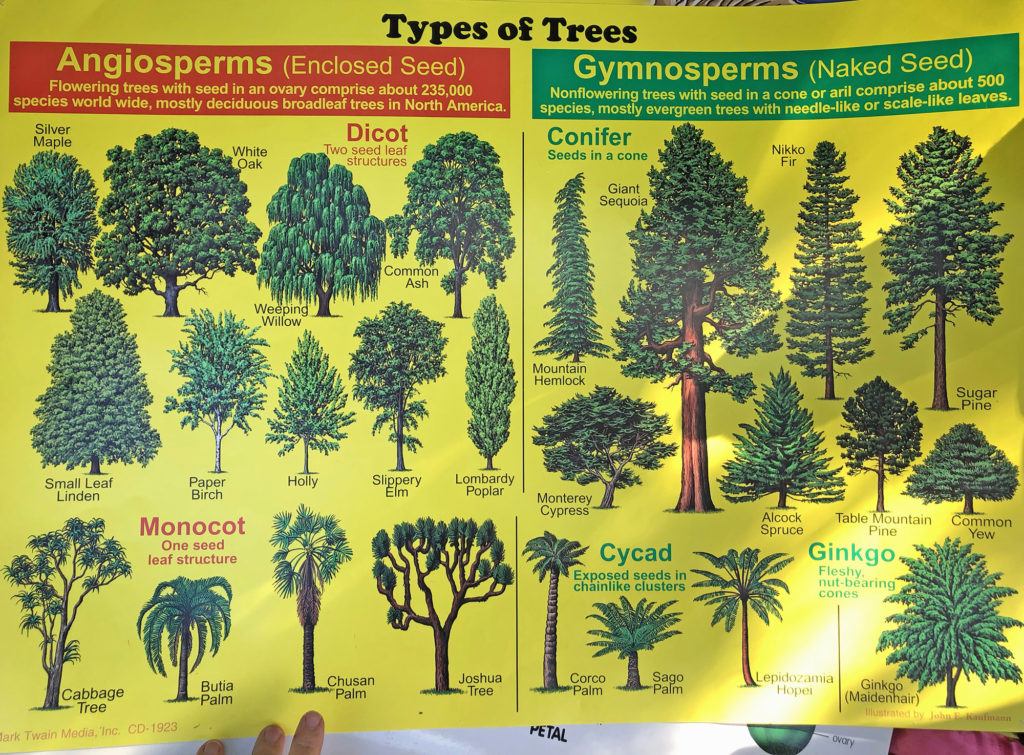
Trees are vascular plants that are either gymnosperms (seeds in cones) or angiosperms (seeds in fruit). Provide an example of a gymnosperm tree and an angiosperm tree.
Heartwood (center) consists of dead cells in the center (“heart”) of the stem. The surrounding layer, which is generally lighter in color, is the sapwood, which consists of living xylem cells that transport water and minerals from the roots to the leaves. This layer is surrounded by the cork cambium, which includes the phloem, cells that transport sugar from the leaves to the roots, as well as bark which protects the entire stem.
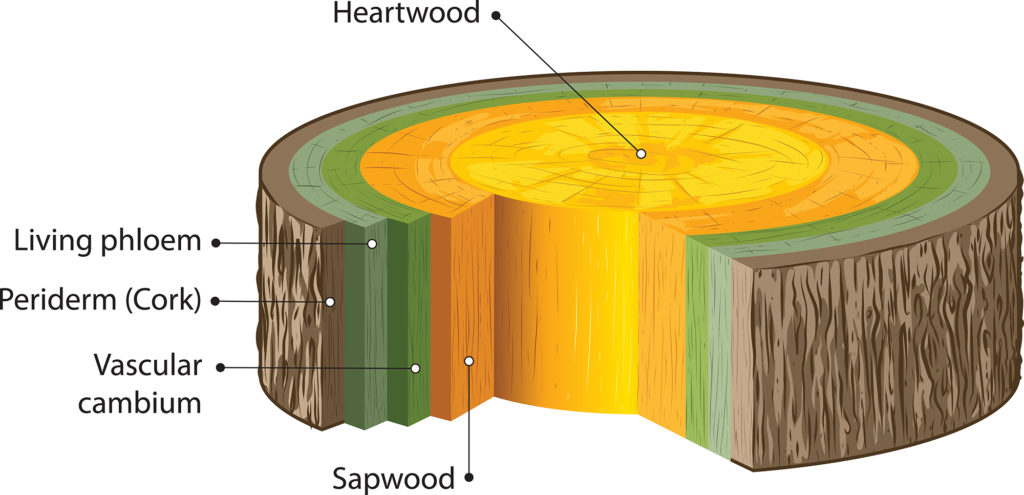
Spring rain produces wide light-colored areas of tree rings called earlywood (springwood). When the growth rate slows in the fall and winter, the darker narrower areas of tree rings are formed. This is called the latewood (summerwood). So, one annual ring typically has both a light springwood area, and a darker summerwood area.
Economic Use of Trees
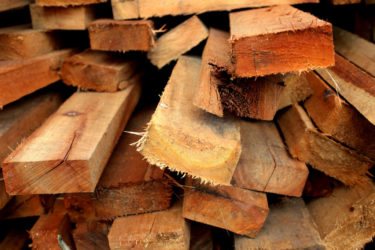
Softwood
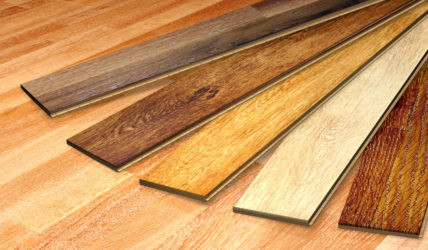
Hardwood
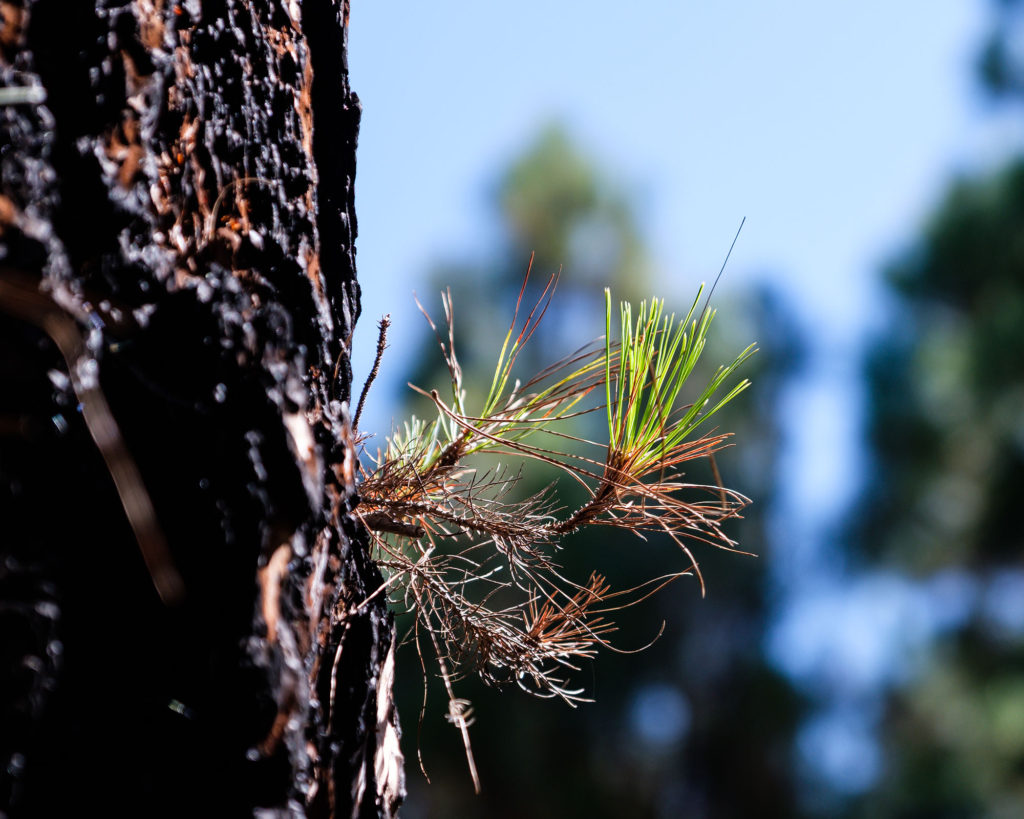
Trees have different strategies that increase the species\’ chances that they will survive a forest fire.
Some trees survive forest fires with thick fire-resistant bark and long needles that protect growth tips.
Ponderosa Pine is highly fire resistant.
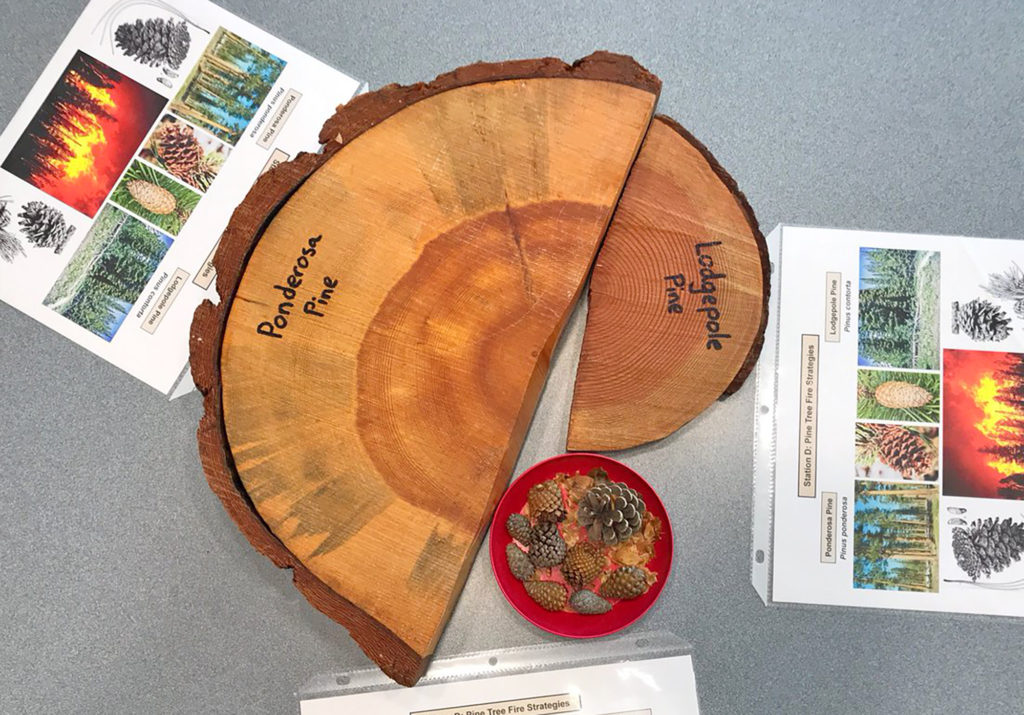
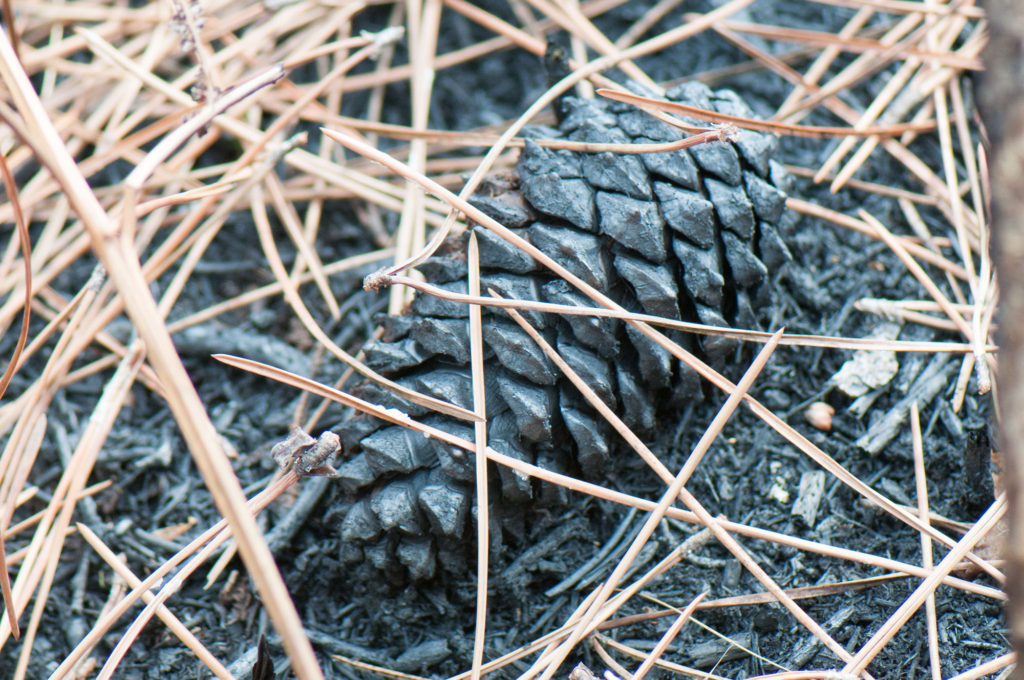
Lodgepole Pine has thinner bark and shorter needles.
This species has serrotinous cones; cones that are closed and protecting the seeds inside, until the high heat of a passing fire opens them up. This way the seeds are dispersed immediately after a fire.

Check your knowledge. Can you:
-
identify different parts of a cross-section of a tree stem?
-
provide examples of different types of wood?
-
describe different ways trees can survive fires?

BI 101 Exam Information
- Tuesday Oct. 22 in lecture (LInC 100);
- Exam starts at 10:00 a.m.; ends at 10:50 a.m.; you can leave when you have completed the exam
- Bring student ID and pencil/eraser
- No note sheets, dictionaries, electronics; just pencil/eraser
- No questions answered during the exam
- Multiple choice format
- Covers all of weeks 0, 1, 2, & 3
- Study using the course objectives
Sample Exam Questions
Examples of the types of questions that can asked on the exam. Similar to the practice exam (extra credit on Canvas), you will have five answer choices to select from, only one will be collect for each question.
- What are the four Kingdoms in Domain Eukaryota?
- An apple is classified as a pome fruit. A cherry is classified as a _______ fruit; and a lemon is classified as a ______ fruit.
- In a flower, what are the roles (functions) of the petals, pistil, stamens, and sepals?
- Describe what Carl Linnaeus developed that we still use to this day?
- What is an example of a species in Family Poaceae?
- Where is the sapwood located in a tree stem?
- How do Ponderosa Pine trees survive a fire?
- Provide examples of two producers, two consumers. and two decomposers.
- Describe a community interaction where both organisms are potentially harmed.
- Provide an example of a plant where we eat a modified stem.
This is just a sample of possible questions. Study your lecture notes; your filled in laboratory and recitation worksheets, and these online resources to be sure you have good coverage of the material on the exam. Use the course objectives to guide your studying.